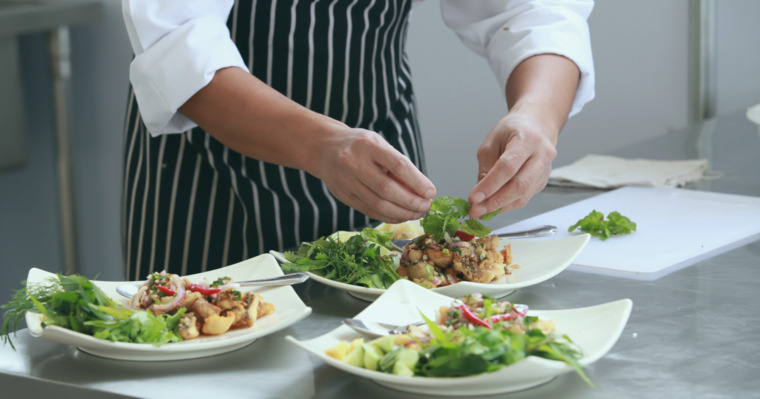Running a restaurant can be a dream come true, especially when we talk about Australia’s vast culinary landscape. But like all businesses in the hospitality industry, accounting processes tend to determine the fate of an establishment. A firm grasp of restaurant financials is crucial for long-term success.
This article explores accounting for restaurants through its particular strategies, tools, and ratios & reports. Read on to learn how to empower yourself to navigate the financial complexities of running a business in food services.
What is restaurant accounting?
Restaurant accounting is the general system used to track income, expenses, and the financial health of a food service business, such as restaurants, cafes, caterers, and takeaways. It ultimately helps business owners make informed decisions to ensure the business is profitable.
By tracking every transaction the business makes and recording different expenses, you can create reports showing a restaurant’s overall profitability and financial position. Understanding these concepts and using them to identify ways to generate more income or lessen expenses is important.
Understanding accounting methods for restaurants
Cash accounting for restaurants
The cash accounting method records income when you receive cash and expenses when you pay them. It’s easier to manage but might not provide a complete picture of your financial health.
For example, if you receive an invoice from an ingredient supplier, it won’t be credited to your accounting system until it’s been paid. Because this expense isn’t immediately reflected, your accounting numbers can give the impression of higher profitability.
Accrual accounting for restaurants
The accrual accounting method records income when it’s earned and expenses when they’re incurred (like an unpaid bill for ingredients). It provides a more accurate picture but is generally more complex for small businesses, requiring tracking outstanding invoices and accounts payable. The Australian government typically requires businesses with a revenue of over $1 million to use accrual accounting.
Understanding the difference between cash and accrual-based accounting empowers you to choose the method that best suits your restaurant’s needs. Remember, good restaurant accounting goes beyond just numbers; it’s the foundation for making informed decisions that keep your restaurant thriving.
Factors that affect accounting for restaurants
The following factors can impact how your restaurant business operates and generates profit. Closely record and monitor the progression of each to enhance your decision-making.
Cost of goods sold (COGS)
COGS is a broader category that includes all the direct costs associated with producing the food you sell. This includes food costs and single-use items like napkins, disposable utensils, and takeaway containers. Monitoring COGS can help you identify areas for cost reduction, such as finding suppliers with a better budget fit.
Sales
Sales are the total revenue generated from selling food and beverages to your customers. They are the engine that drives your profit. Increasing sales through effective marketing, promotions, a strong menu, and excellent customer service will directly improve your profitability.
Other factors explained in this article all work together in a delicate balance against your sales. This can be explained with the following equation:
Profit = Sales – (Food costs + Overhead expenses + Payroll and labour costs)
Food costs
Food costs refer to the direct cost of ingredients used in the food and beverages you sell. These can include raw ingredients like meat, vegetables, pantry items, and more. Food costs are generally the largest expense for most restaurants. Minimising food waste, negotiating with suppliers, and optimising portion sizes can significantly improve your profit margins.
Overhead expenses
Overhead expenses include all indirect costs related to running your business for restaurants, which can mean rent, utility bills, marketing costs, insurance, and waste disposal fees. While these expenses are necessary, managing them effectively can significantly impact your profit. Negotiating lower rent rates, finding energy-efficient appliances, and minimising waste can lead to cost savings.
Payroll and labour costs
This cost encompasses expenses related to your staff, such as wages, salaries and payroll processing, benefits and training, and payroll taxes. Labour costs are another significant expense for restaurant owners, while payroll may pose challenges due to manual errors and the complexity of shifting schedules. Optimising staff scheduling, better workforce management, and a streamlined restaurant payroll process can help manage unnecessary expenses.
Industry-standard average profit margin for restaurant accounting
The average profit margin for restaurants in Australia can be a tricky figure to nail down. Generally, industry reports suggest Australian restaurant profit margins are on the lower side. In 2018, the Australian Financial Review reported an average of 2% profit for every $30 spent by customers, while Restaurant & Catering Australia claimed an average of 4.2% a year later.
Based on these findings, the average profit margin for restaurant businesses in Australia is between 2%-4.2%. Needless to say, businesses in this industry are walking on a tightrope towards decent income. A proactive approach to improving sales and streamlining operations is necessary for many restaurants to stay alive.
Profitability can fluctuate depending on factors like location, menu type, and economic conditions. While external factors exist, focus on the controllable aspects of your business, such as menu pricing, cost management, and labour efficiency, to improve your profit margins and achieve long-term success.
Key restaurant accounting ratios & reports
Accounting ratios and reports are powerful tools to analyse the financial health of your establishment. When you have the following data, you’ll be able to make informed decisions catering to your profitability.
Profit and loss statement
This report, also known as the P&L or income statement, is like a scorecard for your restaurant’s profitability over a specific period (month, quarter, year). It shows your total sales revenue, subtracts the COGS and other expenses, and arrives at your net profit or loss. Analysing your P&L helps you identify areas where you’re making money (e.g., high-selling menu items) and where you might be losing money (e.g., excessive food waste).
Balance sheets
Balance sheets provide an overview of your restaurant’s financial position at a specific point in time. It categorises your assets (what you own, like equipment and inventory) and liabilities (what you owe, like loans and unpaid bills) and shows the difference as your owner’s equity (your investment in the restaurant). A well-balanced balance sheet indicates financial stability.
Cash flow statement
A cash flow statement reports the movement of cash in and out of your business. It shows how much cash you’re generating from operations (sales minus expenses), how much you’re investing (purchasing equipment) and financing (loan payments), and any changes in your cash balance. Managing your cash flow ensures you have enough readily available funds to cover operational needs.
Prime costs
Prime costs refer to the direct costs associated with producing your food, including COGS and labour costs. Understanding your prime costs is essential for menu pricing and profitability. If your prime costs are too high, you might need to adjust menu prices or find ways to reduce labour expenses.
Gross and net profit
Gross profit is the difference between your sales revenue and your COGs. The resulting amount is your initial profit before subtracting other operational expenses, such as rent, utilities, and workers’ salaries. When operational expenses are further deducted, you get the net profit. Net profit is the ultimate profitability metric, determining whether or not your business is making any money.

Common accounting challenges by restaurants & how to avoid them
High volume of transactions
Restaurants typically experience a high volume of daily cash and credit card transactions. This requires a robust system to track income and expenses accurately and maintain sufficient cash flow to cover operational needs. Integrating your POS system with your accounting system can streamline this type of data entry and reporting. The key is to ensure compatibility and proper data flow between these systems.
Complex inventory management needs
Restaurants manage various inventory categories beyond food ingredients. These include beverages, cleaning supplies, single-use items like napkins and utensils, and potentially even equipment spare parts. Managing and costing each category requires a well-defined system.
Unlike many businesses, restaurants deal with perishable goods with short shelf lives. This makes accurate inventory tracking crucial to avoid spoilage and ensure you have enough stock to meet customer demand. Fluctuations in customer traffic can also further complicate inventory management.
Constant cost fluctuations
Unlike some businesses that deal with standardised costs of goods, restaurant food prices can fluctuate significantly. Seasonal variations, supplier pricing changes, and even spoilage can impact COGS calculations. Accurately tracking COGS requires constant monitoring and adjustments.
High labour turnover
The restaurant industry is known for high employee turnover rates. This can make it challenging to accurately forecast labour costs and create efficient staffing schedules. Tracking employee hours, overtime, and payroll taxes adds another layer of complexity.
Tools for restaurant accounting
These tools are the backbone of any sound restaurant accounting system, providing the foundation for tracking your finances. Here’s a closer look at why each one matters.
Bookkeeping
Bookkeeping is the ongoing process of recording your restaurant’s financial transactions. It should be the core of your financial health. A bookkeeping platform will store and organise the data you need to generate accurate financial reports.
Invoices and receipts
Invoices from suppliers and receipts for expenses serve as proof of your purchases and validate your financial records. They’re crucial for tax compliance and audits. Invoicing softwares makes it easier to track these documents alongside your small business bookkeeping processes and ensure compliance during tax audits.
Payroll
Payroll involves calculating employee wages, deductions, and taxes and ensuring timely payments. While it’s necessary for legal compliance with STP reporting, accurate payroll processing also has a large impact on employee satisfaction. A cloud-based payroll software can help you avoid errors from manual calculations and data entry while making sure they are accessible to you and your staff.
Timesheets and rosters
Timesheet tools record employee work hours, while roster tools show staff schedules. These tools help you track labour costs, ensure fair compensation, and optimise staffing levels. Common features of rostering apps include employee scheduling and time tracking, which are vital to an accurate payroll process.
Serve hospitality excellence with your small business today
For restaurant businesses, success hinges on having a firm grasp of your financial health. The tools and strategies outlined here – from understanding key ratios and reports to utilising proper accounting tools – can empower you to navigate the complexities of restaurant accounting.
By embracing proper accounting practices and leveraging the power of technology, both restaurant owners and hospitality accountants can unlock a world of possibilities for their businesses. So, take the first step towards financial clarity and watch your business thrive.
